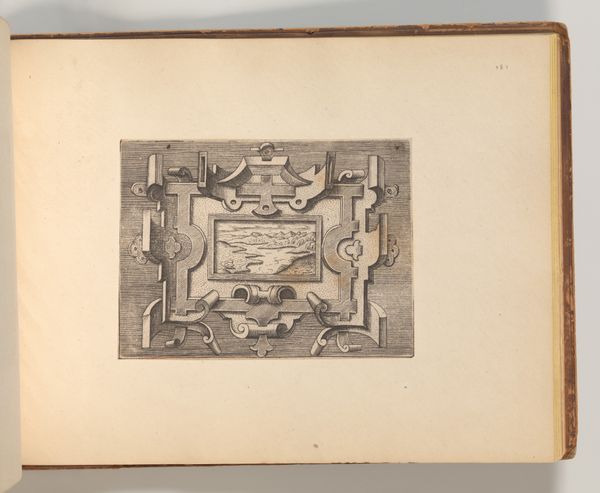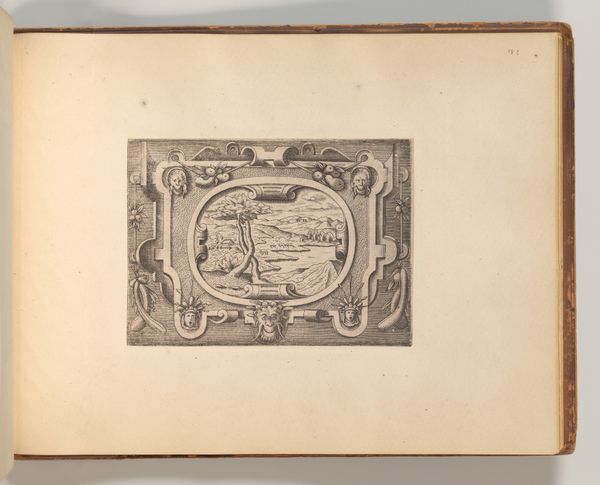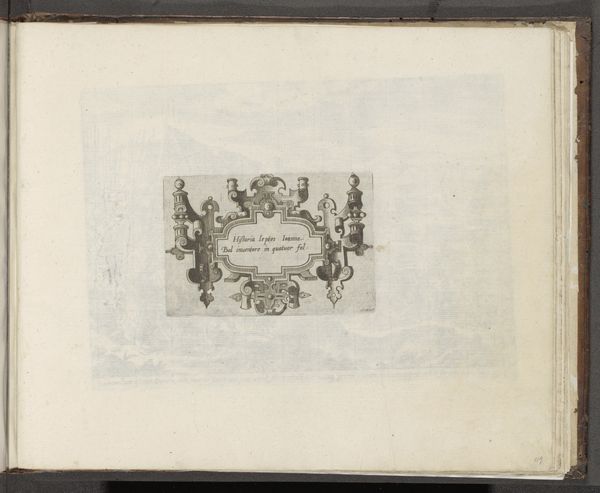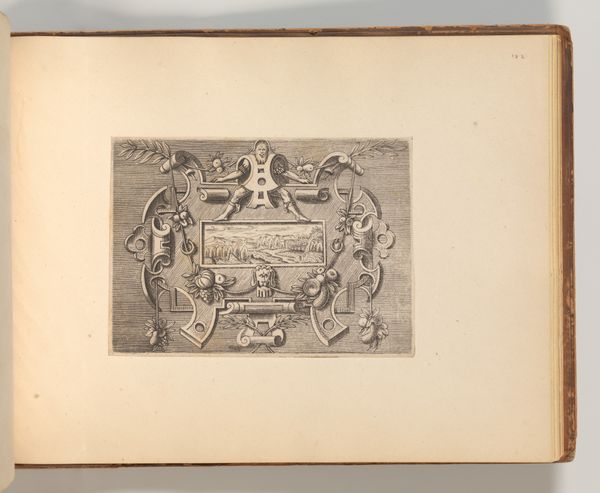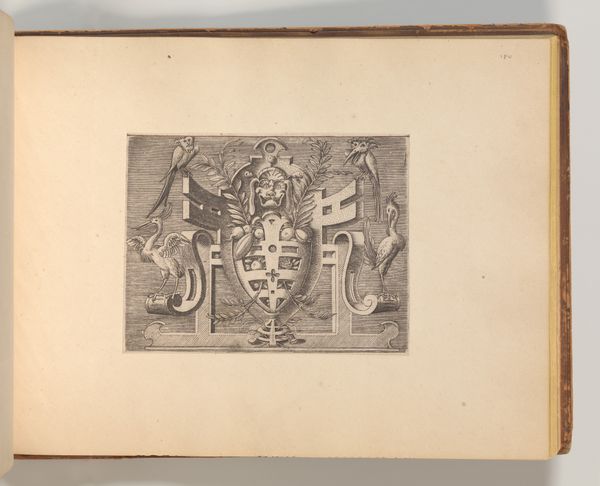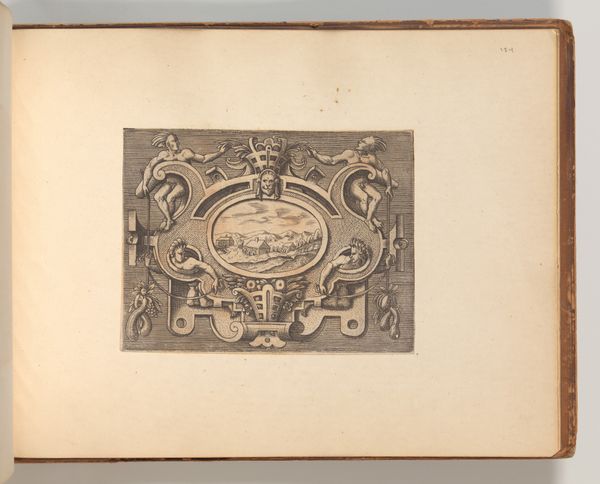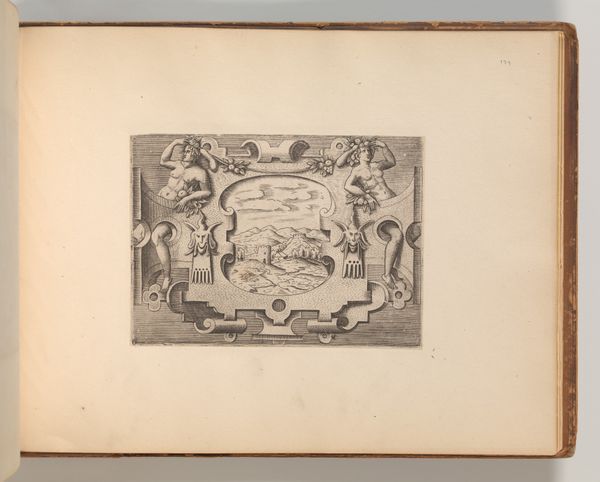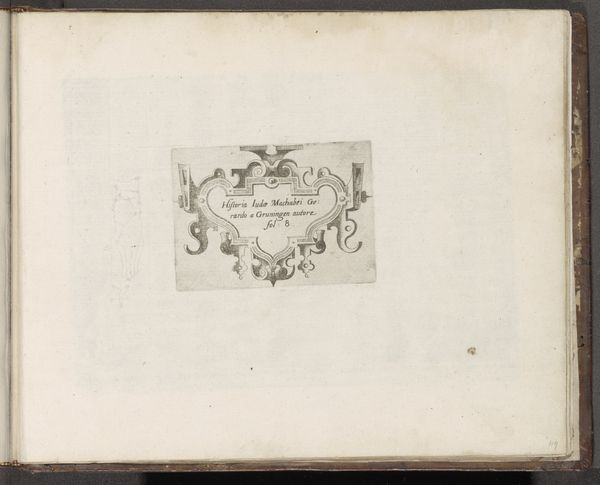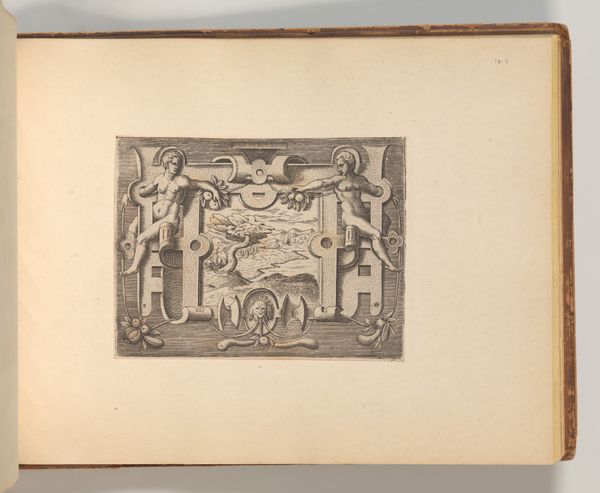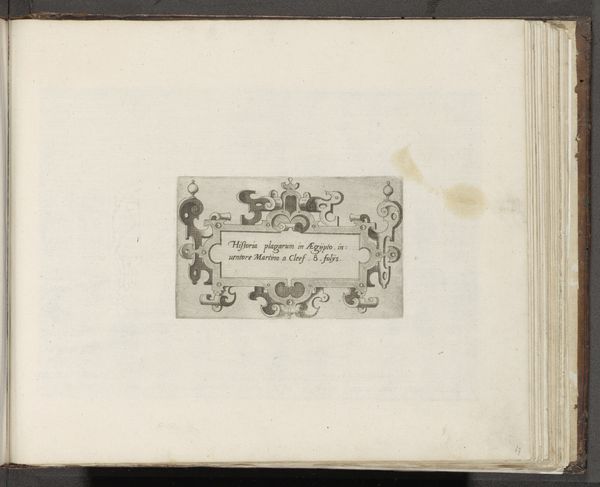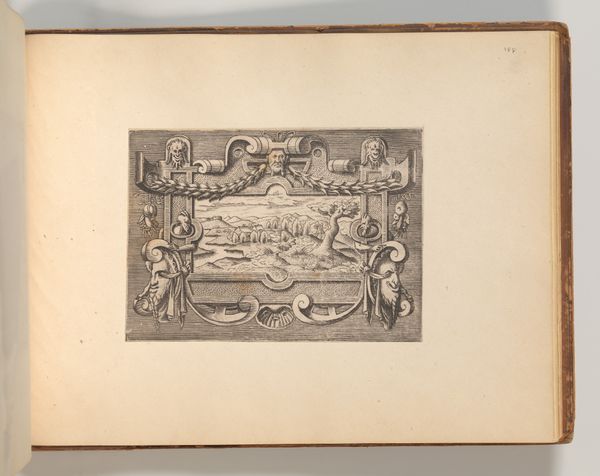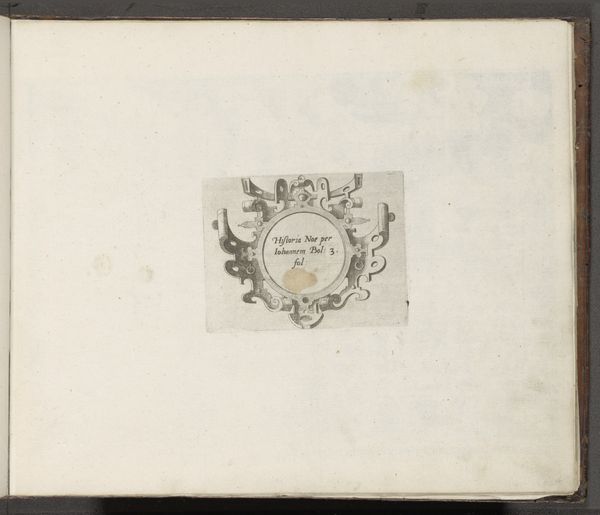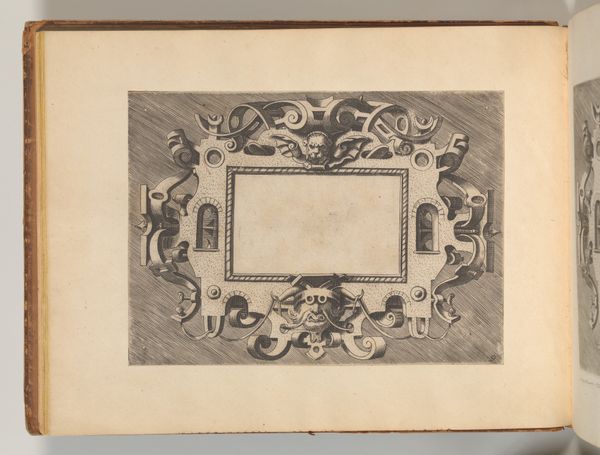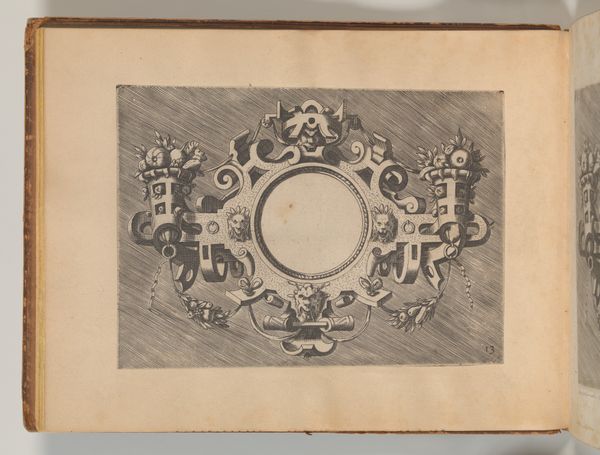
Series of Cartouches, in: Targhe ed altri ornati di varie e capricciose invenzioni (Cartouches and other ornaments of various and capricious invention, page 46) 1540 - 1560
0:00
0:00
drawing, print, engraving
#
drawing
# print
#
11_renaissance
#
geometric
#
line
#
engraving
Dimensions: Sheet: 7 7/8 × 10 5/16 in. (20 × 26.2 cm) Plate: 5 1/8 × 11 13/16 in. (13 × 30 cm) Overall: 8 1/4 × 10 5/8 in. (21 × 27 cm)
Copyright: Public Domain
Curator: Here we have an engraving by Cornelis Bos, a page from "Targhe ed altri ornati di varie e capricciose invenzioni," a series of cartouches dating from 1540 to 1560. Editor: My first impression is that it’s so intricate, yet strangely muted. The geometric frame overwhelms the little scene within. It’s like a stage set, but the drama's happening backstage, obscured. Curator: Absolutely. Consider the context. Cartouches were used to frame inscriptions, coats of arms, all sorts of declarations of power. This, though, this is part of a book. Who controlled its dissemination and use? How did that intersect with gendered notions of knowledge and authority in the Renaissance? Editor: That geometric frame certainly asserts a kind of authority—all those crisp lines, symmetrical shapes. It’s like a visual language of order, meant to contain and control meaning. Curator: Precisely! And the imagery itself – that tiny scene looks like a battlefield or perhaps some mythic struggle. How might the viewer have understood that kind of iconography at that specific moment in the mid-16th century? Editor: These forms harken back to classical motifs. Think about triumphal arches, the visual vocabulary of Roman conquest and imperial power. But there’s also something playful in those curved flourishes—a tension between rigid structure and fanciful ornamentation. It speaks of that moment when established symbols meet creative expression. Curator: I'm struck by the interplay between public display and intimate consumption through prints and drawing. Bos takes the very form used for grand declarations and makes it portable. This democratizing force raises interesting questions. Who was empowered by owning or encountering such imagery? How might such items intersect with debates about the role of women or the access to new technologies and methods of learning? Editor: Thinking about these symbols, they represent stability but there is clearly something tempestuous at the heart of this image, those figures in motion suggesting anything but tranquility. It suggests both control and chaos existing at once, which makes it strangely contemporary! Curator: It reminds us that seemingly innocuous ornamental forms were deeply enmeshed with questions of power, knowledge, and identity. Editor: And that images, however small, continue to echo through time, carrying their weight.
Comments
No comments
Be the first to comment and join the conversation on the ultimate creative platform.
